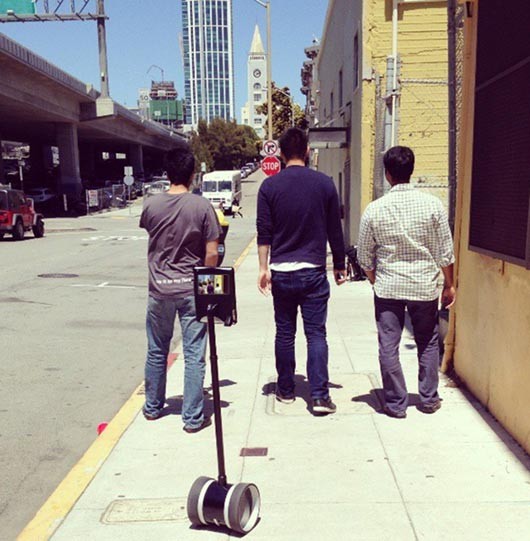
Autonomous Video Artist (mockup image based on original from tokbox.com)
Today the University of Illinois Board of Trustees approved my appointment as a Fellow at the Center for Advanced Study during 2016-17. Here’s my summary project statement:
Autonomous Video Artist: Seeing the Machine in Human Vision
Ben Grosser
School of Art + Design
National Center for Supercomputing ApplicationsHumans see through the lens of culture. Rather than objectively observing our environment, we filter out much of what the eye collects based on prior experiences of the world. This act of gathering, filtering, and interpreting visual input constitutes the act of seeing. But because of this filtering, seeing is always accompanied by an act of not-seeing. In other words, our ways of looking at the world are culturally developed, leading us to see what we have learned to see.
Posthumanist thought argues that a full understanding of human experience requires consideration of non-human experience that sees around our blind spots. Donna Haraway proposed a genderless “cyborg” that would see gender differently in order to disrupt limiting norms of gender and identity. With recent technological advancements, artificial intelligence makes possible the construction of a computational other, a posthumanist outside observer that employs machine vision to see and interpret the world without the influence of cultural history.
To investigate the effects of culture on human vision, I will create a new artwork called Autonomous Video Artist (or AVA for short). AVA will be an artificially-intelligent, self-propelling, video-capture robot that seeks out, records, edits, and uploads its own video art to the web. AVA will be that outside observer that not only looks at our world but attempts to decode it as an artist. But different than human artists, AVA hasn’t spent years watching videos or learning how artists convey narrative using temporal media. Instead, AVA will start from the beginning, using an iterative process of making to develop its own ideas of what video art can be. Most importantly, AVA will see the world differently than we do. This difference will help uncover how culture directs what we see and don’t see, showing us the machine in human vision.
I’m honored by the selection and look forward to being a part of the Center next year. I also appreciate the School of Art + Design’s support of this opportunity. Stay tuned for project updates.